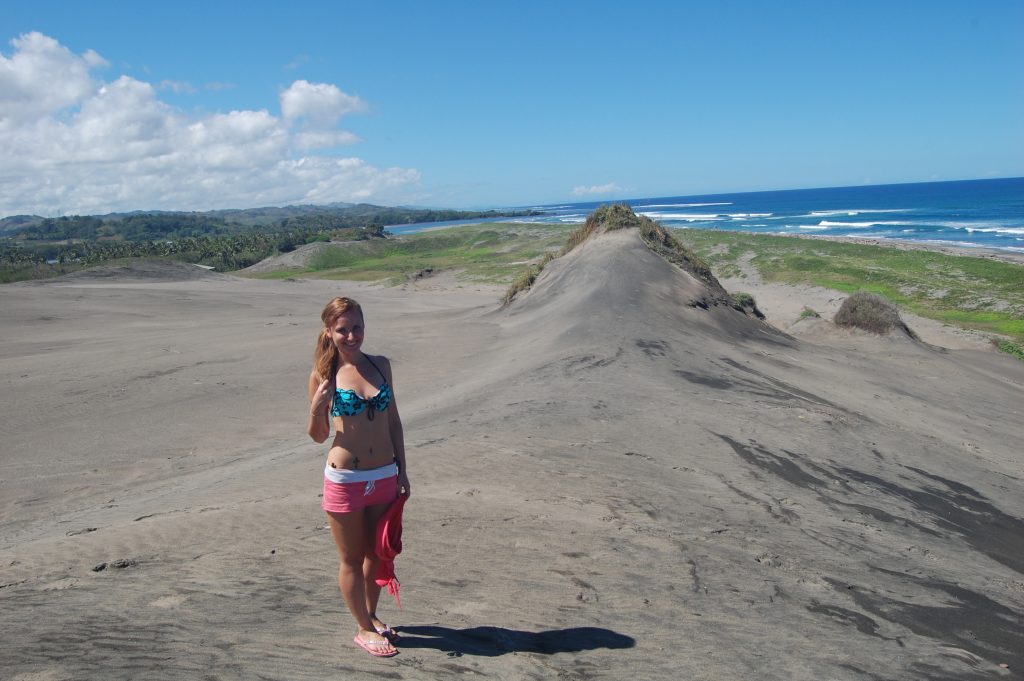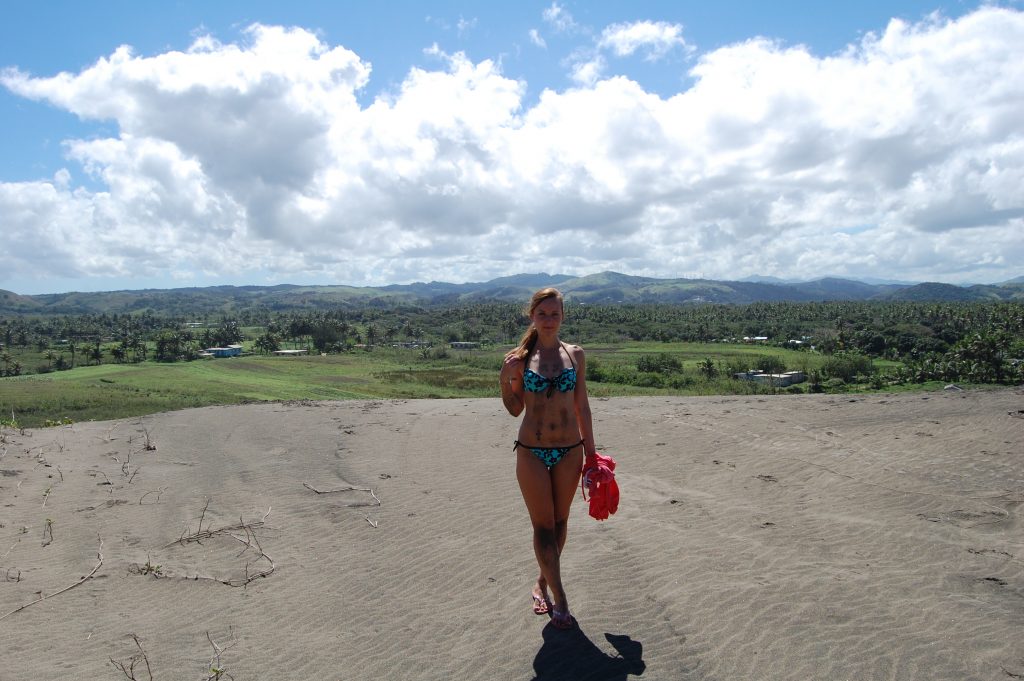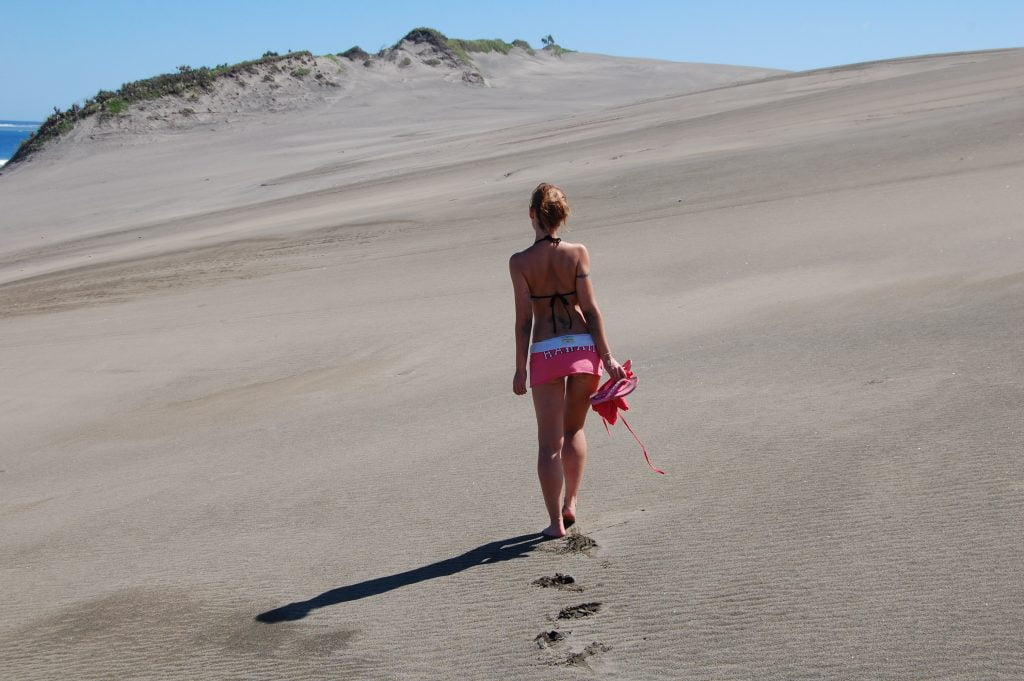The Sigatoka Sand Dunes National Park is located on the southern end of Fiji’s largest island – Viti Levu. I was very intrigued with the prospect of an enormous empty beach. As a result, I planned our trip to Viti Levu with Sigatoka Sand Dunes as the focal point. Therefore, I rented a nice bungalow in Cuvu which is only a few kilometers away from the park entrance. Cuvu is also conveniently close to the town of Sigatoka.
History of Sigatoka Sand Dunes
Sigatoka Sand Dunes National Park was established in July 1989 and it was to be Fiji’s first national park. The black sands are of volcanic origin and they are sourced from the island’s volcanic interior by way of the Sigatoka River.
Additionally, it is common to find artifacts along the exposed ridges of the sand dunes. Some of relics discovered are up to 2600 years old. This includes not only ancient stone tools, pottery shards and utensils but also human remains. In fact, the location of the black sands is one of the largest burial sites in the Pacific. We did not discover any of these relics although we were also not looking for them.

Parabolic Sigatoka Sand Dunes
The Sigatoka Sand Dunes National Park covers a massive 650 hectares. Classified as parabolic by the experts, these ancient sand dunes are partly vegetated and they are found in coastal regions.
Although some speculate that the vegetation anchors the dunes, it is actually the moisture from the ocean. Additionally, these vegetated coastal areas form U-shaped sand dunes with convex noses, trailed by two long ridge lines.
The U-shaped nose faces away from the wind source. As a result, Sigatoka’s parabolic dunes face towards the north west away from the strong south easterlies which are constantly blowing. Also, there is a slip face on the back side of the park which is fun to run down after a day at the beach.



Surfing at Sigatoka Sand Dunes National Park
The surfing at Sigatoka looks great on paper but after exploring the area I thought otherwise. Mainly, the beach is hammered pretty good with a constant cross wind. Additionally, the close proximity of the river mouth is classic shark attraction.
Otherwise, the empty beach should be very alluring and you will have it all to yourself. In fact, the whole area around the inside park is mostly deserted all of the time. I frequented the beach quite often and very rarely encountered other visitors.
Additional Photos:




Related Post:

